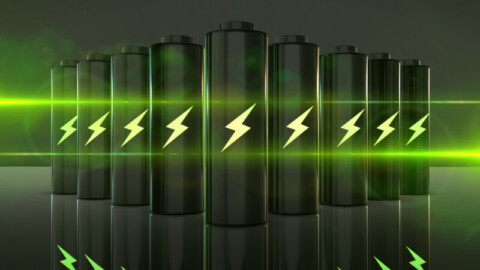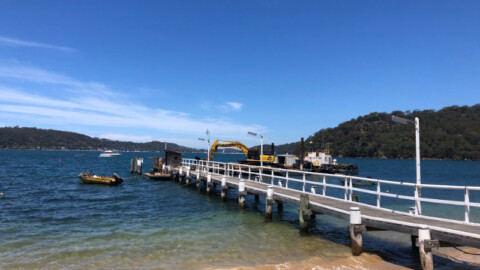By John Thompson, Journalist, Energy Magazine
Substations are the backbone of Australia’s energy grid, connecting electricity generators to essential projects and everyday households now and into the future. Here, we cover everything you need to know about these often overlooked yet increasingly important parts of our national energy infrastructure.
Substations are the unsung hero of the National Electricity Market (NEM), connecting the electricity produced by generators with industry and consumers alike. The transfer of energy from where it is produced, such as at power stations, over long distances to where it is used, such as in commercial or residential areas, requires high voltages.
Electricity is transferred through Australia’s transmission network at voltages as high as 275 kilovolts (kV) – significantly higher than the voltage at which electricity needs to be transferred through Australia’s distribution networks. The voltage of electricity conducted by distribution powerlines varies from 415 volts, which are low voltage, to 66 kV (66,000 volts), which are high voltage.
Electricity must be converted to high voltages for efficient transport over long distances to minimise the loss of electrical energy that naturally occurs. The high voltage transmission network strengthens the performance of the electricity industry in three ways: giving customers access to large, efficient generators that may be located hundreds of kilometres away; allowing many generators to compete in the electricity market, reducing the risk of market power; and allowing electricity to move instantaneously over long distances reduces the amount of spare generation capacity that must be provided at each town or city to ensure a reliable electrical supply.
However, for electricity to be used at a residential level, it needs to be converted to lower voltage power so that it is compatible with the mains voltage of common household electric appliances – and this is where substations come into the equation. Substations take the electricity transported through the transmission network, and lower the voltage so that electricity can be transported through the distribution network.
Substations don’t produce energy but instead regulate it, allowing the efficient transportation of large volumes of electricity over the transmission network, and the conversion required for this electricity to be used in homes and businesses.
Transforming the grid
Substations are built to house and protect several critical systems and technologies for the safe regulation of transmission voltages – the largest and most important of which is transformers. It has been estimated that there are more than 574,000 utility-owned transformers in Australia, together boasting a capacity of at least 79,000 megavolt-amperes.
Transformers are the equipment used to adjust the voltage of energy supply, first increasing it for long distance transmission, before decreasing it for distribution. The facilities used to increase voltages for long-distance transmission are known as ‘bulk supply substations’. This electricity is then received by ‘zone substations’ which lower the voltage and transport it through the distribution network. Substations also host staff facilities and remote operating technology for safety and control systems.
Similar facilities, called switchyards, do not feature transformers and thus do not adjust power voltages. They are instead used to redirect or reroute energy as needed. In a 2020 report by the Australian Energy Regulator (AER), it was found that switchyards, substations and transformers represented 44 per cent of Australia’s transmission network infrastructure.
Substations of substance
A number of new or upgraded substation projects are underway in Australia; powering future developments, current services and even national defence facilities. Notable projects include SA Power Networks’ recent construction of a 66kV to 11kV substation, which will support the land-based test facility for the Australian Navy’s new Hunter Class submarine frigates.
SA Power’s Network Project Manager, Sinisa Culibrk, said the St Kilda substation brings together many parts of the business to deliver for an important customer and national defence project.
“As part of the project, we are building a new, dedicated substation to provide the required load for the new Defence Training Centre,” Mr Culibrk said.
Also of note is global clean-energy supplier Neoen’s standalone Battery Energy Storage System (BESS) to be developed in Collie, Western Australia. Connecting the proposed battery to Western Australia’s South West Interconnected System (SWIS) – the state’s main electricity grid –will be a 330/33kV substation with step-up power transformers, and 330kV overhead cables to connect to the existing Western Power transmission infrastructure.
And a recent project by CitiPower also saw the delivery of a 74-tonne high-voltage electricity transformer to its Port of Melbourne substation, ensuring reliable services and greater capacity for port services. The decision to upgrade was made after the retiring of CitiPower’s West Melbourne Terminal Station’s 22kV equipment, necessitating the decommissioning of power lines and rerouting of supply to other inner-city Zone Substations. The project required a large crane to help place the 4.8m high transformer into position at CitiPower’s Dock Area Zone Substation.
Powering the future
As the world wisens to the consequences of climate change, Australia is now poised to transition to net zero energy technologies.
Substations will remain critical in both facilitating and maintaining this transition, which will demand both flexibility and resilience in the transmission network. The transmission network will have a critical role to play, connecting identified Renewable Energy Zones in rural parts of the country with the capital cities where vast amounts of electricity is used.
Around the country, existing transmission lines are being upgraded, with substations also being upgraded to suit increasing needs. One example is Transgrid’s ongoing Victoria to New South Wales Interconnector (VNI) project, which will allow substations at Yass and Stockdill in Victoria to facilitate the transfer of an additional 50MW, enough to power 30,000 homes.
Using new SmartValve technology Transgrid is able to upgrade substations using existing transmission infrastructure, with the SmartValve units redirecting power off overloaded transmission lines and onto lines with spare capacity.
Transgrid’s Executive General Manager of Delivery, Craig Stallan, said the project was a sustainable alternative to building new facilities, and would better support new renewable energy sources.
“This is clever technology which benefits both customers and the environment and will allow renewable energy from Victoria to flow into NSW and the ACT when demand is greatest,” Mr Stallan said.
“Using SmartValves means no new lines are needed, so extra energy is unlocked with minimal environmental and community impact associated with building new lines or upgrading existing ones.”
No transition without transmission
Australia has begun its transition from carbon-intensive coal-fired power plants and fossil fuels, which has been accelerated by AGL’s recent commitment to exit the coal industry by 2035 – ten years ahead of schedule.
But the transition to renewable energy presents new challenges for energy providers, for unlike fossil-fuel generated electricity (the output of which can easily be adjusted for periods of low or high usage) renewable energy is dependent on natural phenomena such as sun, wind or water.
The comparative unpredictability of these renewable sources demands greater flexibility in the grid. Though much has been made of new battery storage technologies, which allow energy to be stored during periods of low-demand to be used in those of high-demand, legacy hardware such as substations will remain critical in providing the tools and resources needed to mitigate against grid-instability.
For though individual states and territories may be affected by low-generation from unideal weather conditions (e.g. low wind speeds or light levels) it is unlikely that these same conditions will affect generators in other locations.
Accordingly, a resilient transmission network will continue to make use of substations, which would allow energy from high-output sources in periods of low-demand to be redistributed for areas with low-output and high-demand; guaranteeing reliability for both producers and consumers of electricity. As such investment in both new and legacy transmission technologies, including substations, will be essential to the future energy grid.
Components of a Substation
» Light poles provide lighting for crews that might need to attend the site in the event of a fault.
» Surge arrestors protect equipment within the substation from any voltage spikes on the transmission lines.
» Line disconnectors allow transmission lines and equipment within the substation to be safely isolated for maintenance work.
» Gantries guide transmission lines into the substation.
» Voltage and current transformers measure voltage and current entering and moving through the substation.
» Circuit breakers are automatic switches that interrupt electrical flow to de-energise equipment and clear faults.
» Lightning masts attract lightning away from sensitive substation equipment.
» Busbars are conductors which connect equipment within the substation.
» Weather stations provide real time information about localised conditions which could affect the safe and reliable operation of the transmission network.
» Power transformers increase or reduce voltage, depending on whether the substation is an entry point to the transmission network or an exit to the distribution network.
» Communications towers allow substations to be remotely monitored and operated.



















